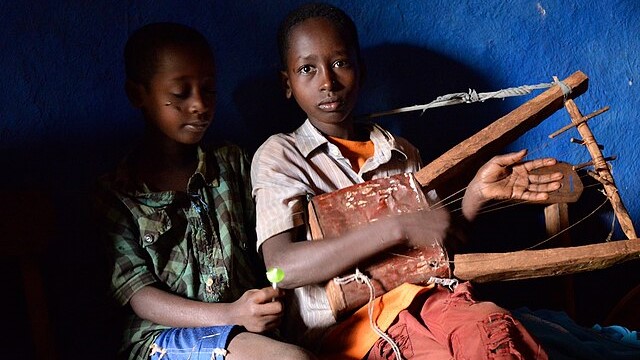In Ethiopia, music resonates as both a guardian of history and a mirror of change. From the lilting strains of ancient instruments to the pulse of modern fusion, the country’s soundscape reflects a cultural heritage in motion—anchored in tradition yet continually evolving.
At the heart of Ethiopia’s musical identity lies its distinctive tonal structure. Built on a pentatonic, or five-note, scale, Ethiopian melodies diverge sharply from Western conventions, offering listeners a sound both familiar and unfamiliar, ancient yet immediate. The krar, a lyre with a resonant twang, the single-string masenqo, and the deep-throated kebero drum remain central to performance, their timbres weaving together stories passed down through generations. These instruments are more than tools of entertainment; they are conduits of memory, integral to ceremonies, festivals, and daily gatherings.
Music has long served as a vessel for cultural expression in Ethiopia. Songs are imbued with themes of love, struggle, and resilience, reflecting both personal narratives and collective histories. Across regions, variations emerge—the rhythms of the highlands, the chants of the Orthodox Church, and the celebratory tunes of rural communities—each bearing its own imprint of identity.
In recent decades, the landscape has shifted as traditional sounds encountered modern currents. Ethio-jazz, pioneered in the 1960s by Mulatu Astatke, remains one of the most influential hybrids. By blending improvisational jazz with Ethiopian scales and rhythms, Astatke introduced the world to a sound at once cosmopolitan and rooted in local tradition. His work has since inspired a new generation of artists, ensuring the genre’s endurance on international stages.
Other influences have followed. Reggae and hip-hop, carried to Ethiopia through diaspora communities and global media, have been adopted and reimagined. Teddy Afro, one of the country’s most prominent contemporary performers, has fused reggae rhythms with Ethiopian motifs, producing music that addresses themes of unity, identity, and social justice. His songs, widely popular among younger audiences, exemplify how contemporary genres can be reframed to speak to Ethiopian realities.
The vibrancy of this musical culture is perhaps most visible at festivals. Events such as the Addis Jazz Festival and the Oromia Music Festival bring together artists across generations and genres. Traditional ensembles perform alongside experimental groups, offering audiences a spectrum that stretches from ancestral melodies to contemporary fusions. These gatherings underscore music’s role as both cultural preservation and creative innovation, affirming Ethiopia’s place within a global conversation about sound and identity.
Ethiopia’s music scene continues to expand, negotiating the tension between preservation and reinvention. In its layered harmonies, one hears the persistence of history as well as the urgency of the present—a blend that has become the country’s signature contribution to the world of music.
Sources:
- Shelemay, Kay Kaufman. Music, Ritual, and Falasha History. Michigan State University Press, 1986.
- Astatke, Mulatu. Ethio Jazz and Musical Innovation in Ethiopia. Interviews and Recordings, 1960s–2010s.
- UNESCO. Ethiopian Traditional Music and Cultural Heritage.
- National Museum of Ethiopia. Cultural Expressions in Music and Art.

